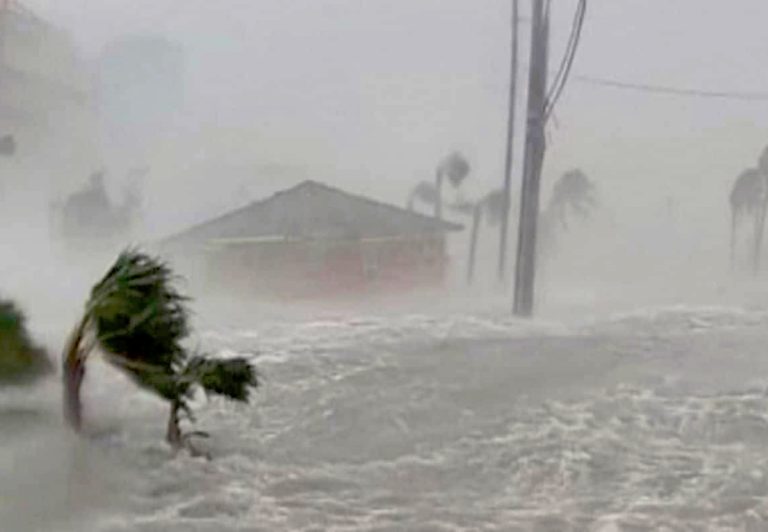
An article published on the CNBC website on July 29 stated: “Home insurance premiums rose by 21% last year. Experts say climate change is part of the reason.
The article goes on to say, “Experts say an increase in severe weather is largely to blame for the increase, but it’s hard to say how insurers are incorporating climate risk into policy costs.”
This is wrong; multiple data and studies show that severe weather has been decreasing over the past few decades, despite a slightly warmer climate.
The basis for the claim in the article is as follows:
Home insurance prices will increase by an average of 21% at renewal between May 2022 and May 2023, according to Policygenius.
Experts say an increase in catastrophic severe weather events is driving up prices, and they don't expect the pace to slow down. As insurance companies face higher costs, they pass these costs on to consumers in the form of higher premiums.
The first mistake they made was that a year doesn't show the effects of climate change.
Climate operates on much longer time scales, spanning decades, whereas Weather operates over a short period of time, from a few days to a year. What we experience every day are weather events, not climate events. As has been said many times, weather is not climate.
If there is less severe weather in the same year, it has nothing to do with climate change. However, this was a choice made to support the claims made in the article.
The article itself contradicts the claim in the title of this paragraph,
Although home insurance premium prices have increased significantly over the past year, this is not a new phenomenon. Until then, Between 2012 and 2021, the average premium rose from $1,034 to $1,411According to the Insurance Information Institute.
Clearly, Premium increases aren't just related to the weather during the year.
The title quoted so-called experts as saying that “climate change is part of the reason.” Sadly, none of the people mentioned in the article have any climate expertise.
Unusually cold period in New York:
“These stupid anti-science Trumps make us great again people need to understand that weather is not climate change!”Unusually warm period in New York:
“This is proof that climate change exists and the science is irrefutable!!!” pic.twitter.com/nH4pWt8nAD— Brad Slager – Washed in a Bloodbath (@MartiniShark) December 27, 2023
Compared to climate change, the data on severe weather are very clear. Many real-world data show no increase in droughts or heat waves; no increase in floods; no increase in tropical cyclones and hurricanes; no increase in winter storms; and no increase in thunderstorms or tornadoes or the associated hail, lightning and high winds caused by thunderstorms.
Additionally, research published by the Intergovernmental Panel on Climate Change (IPCC) shows that the link between severe weather and climate change is not yet known.
It can be seen from Table 12.12 in Chapter 12 on page 90 of the United Nations IPCC Sixth Assessment Report that Climate Impact Drivers (CID) appear, There is no evidence of any increase or decrease globally or by regionfrequency, severity or extent of frost, average precipitation, riverine flooding, heavy rainfall and flooding, landslides, drought, hydrological drought, agricultural or ecological drought, fire weather or wildfires, average wind speed, severe storms or tornadoes, tropical Cyclones or hurricanes, dust storms, snow or ice sheets, heavy snow and ice storms, hail, avalanches, relative sea levels, coastal flooding, coastal erosion, marine heat waves, ocean acidity, air pollution weather or the Earth's radiation surface.
The most compelling evidence comes from insurance losses related to severe weather. As the Earth has warmed modestly over the past few decades, property damage trends have declined.

Because climate change is not causing an increase in extreme weather, it is unlikely to lead to higher insurance premiums; The data simply do not support this premise. There must be other factors at play.
For example, this article from the National Association of Realtors suggests Florida and Louisiana, the two states most vulnerable to hurricanes, saw the largest increases in insurance rates This is despite a decline in the number of major hurricanes hitting the United States over the past decade.
A likely factor is the increase in coastal populations. People like to live by the sea. The population of U.S. coastal counties has been growing, adding 40.5 million people from 1970 to 2020, an increase of approximately 46%.
Although this is Coastal counties account for less than 10% of the land area, but account for 39% of the total population. By the 2020s, the population is expected to increase by more than 10 million people, or more than 8%.
As more people live along coastlines, risks to life and property increase, although No trend in coastal storms. Insurance growth appears to be driven primarily by demographic changes rather than climate.
There is no evidence that climate change is exacerbating the extreme weather events affecting the country.
It was irresponsible of CNBC to publish this article as it contained many inaccurate and misleading claims. But nowadays this seems to be “natural” in the media.
Read more Climate Realism
